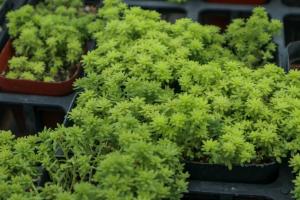Can You Plant Trees in Burlap?
Planting trees is an essential aspect of environmental conservation. It helps to mitigate the effects of climate change and improve air quality. However, the process of planting trees requires proper planning and execution to ensure the seedlings mature into healthy trees. One technique of planting trees that has gained popularity is plant burlap. In this article, we will explore the process of planting trees using burlap and examine its advantages and disadvantages.
What is Burlap?
Burlap is a type of cloth made from jute or sisal plant fibers. It is a natural, biodegradable material that is commonly used in landscaping and gardening. Burlap is popularly used to wrap trees during transportation and for protecting young seedlings. Burlap is an environmentally friendly material that is easily decomposable, making it an ideal planting solution that does not harm the environment.
How to Plant Trees in Burlap?
Planting trees using burlap is a simple process that involves a few simple steps. The first step is to select healthy seedlings from a reputable tree nursery. Once you have acclimatized the seedlings to the planting environment by gradually exposing them to outdoor temperatures, prepare the planting hole. The planting hole should be at least double the size of the root ball to allow enough space for the roots to develop. Next, carefully remove the burlap from around the root ball, without damaging the roots. Finally, backfill the hole with soil and water the seedling thoroughly.
Advantages of Planting Trees in Burlap
One of the main advantages of planting trees using burlap is that it helps retain moisture around the root ball. This not only ensures the health of the roots but also helps to conserve water. Additionally, burlap filters and prevents weeds from growing around the tree, protecting it from competition for nutrients. Finally, burlap protects the tree from damage during transportation and planting, making it an excellent choice for seedlings that are at risk of being exposed to harsh winds, sun, and frost.
Disadvantages of Planting Trees in Burlap
Despite its many advantages, there are a few drawbacks to planting trees using burlap. One of the main disadvantages is that burlap does not decompose as quickly as expected, and it may wrap around the roots and limit their growth. Additionally, burlap may restrict the tree's penetration of water and nutrients, causing stunted growth or tree decline. Finally, planting trees using burlap may be expensive, especially for large trees, which require larger pieces of burlap for wrapping and transportation.
Conclusion
In conclusion, planting trees using burlap is an excellent solution for protecting young seedlings during transportation and planting. Burlap is a natural material that is biodegradable and eco-friendly. It helps to retain moisture and prevent weeds, ensuring the seedlings grow and develop healthily. However, despite its many benefits, planting trees in burlap may limit root growth, restrict water and nutrient uptake, and be expensive for large trees. Therefore, it is essential to weigh the advantages and disadvantages of using burlap before deciding on the ideal planting method for your seedlings.

 how many times do yo...
how many times do yo... how many planted tre...
how many planted tre... how many pine trees ...
how many pine trees ... how many pecan trees...
how many pecan trees... how many plants comp...
how many plants comp... how many plants can ...
how many plants can ... how many plants and ...
how many plants and ... how many pepper plan...
how many pepper plan...
































